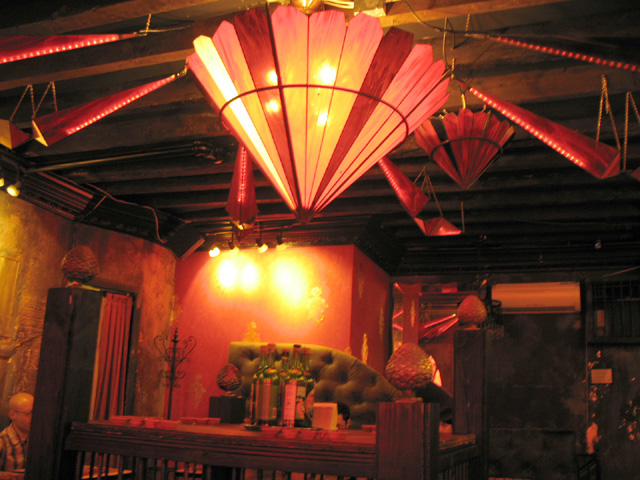
Upstairs at Mayahuel
Fourth in a series recapping the 2010 Manhattan Cocktail Classic.
Most people would be content to be recognized as an internationally renowned artist, with pieces housed in the permanent collections of LACMA and the Guggenheim. But Ron Cooper, Founder and President of Del Maguey Single Village Mezcal, isn’t most people. His artistic accomplishments are simply steps along the path of a remarkable journey that has taken him from remote villages in Oaxaca to top restaurants and bars across the U.S. and around the world.
Cooper would share the story of that journey on Day Three of the Manhattan Cocktail Classic, during The Magic of Mezcal: Making the Maguey Cocktail. The sold-out session took place at Mayahuel, the house of agave worship that Phil Ward and Ravi DeRossi opened last year in the East Village.
After checking in, we were directed upstairs to seat ourselves. The packed room was SRO, but luckily I was at a table with Stephanie Moreno (Astor Wine & Spirits) and Lindsey Johnson and Dave Harrison of Lush Life Productions. Arranged on the tables in front of each guest were five clay sipping cups, filled with Del Maguey Mezcal.
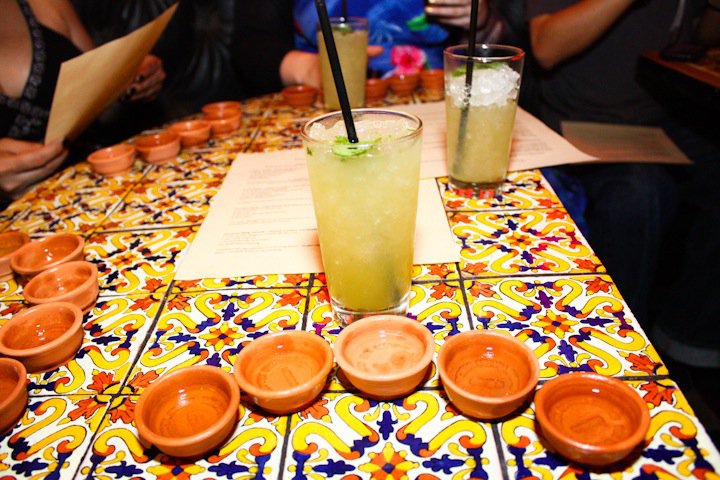
Del Maguey sipping cups and Salsa Verde cocktail. | Photo: Lush Life Productions
We started off with a refreshing Salsa Verde cocktail, courtesy of Andy Seymour (aka wine geek). For our welcome drink, Seymour featured Del Maguey’s latest release, the entry-level Mezcal Vida de San Luis del Rio.
SALSA VERDE
- 1 3/4 oz. Del Maguey Mezcal Vida
- 1 1/4 oz. fresh cucumber juice
- 1/2 oz. fresh lemon juice
- 1/2 oz. agave nectar
- Fresh cilantro
- Put 6 cilantro leaves in a mixing glass, add remaining ingredients and fill with ice. Shake hard and strain over crushed ice in a highball glass. Garnish with fresh cilantro leaves.
As we sipped our Salsa Verdes, Steve Olson (aka wine geek) welcomed us by saying, “I want to look everyone in the eye and see what kind of people want to spend an afternoon drinking mezcal!” Hearty cheers all around, as Olson thanked everyone for attending, then talked about his own passion for mezcal before introducing Ron Cooper with a genuine admiration and respect that would be echoed throughout the session.
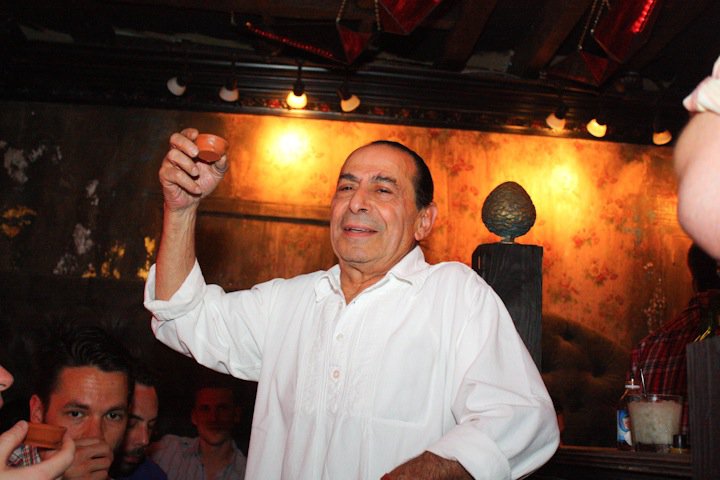
Stigibeu, Ron Cooper! | Photo: Lush Life Productions
Cooper thanked us as well, then lead everyone in a toast: stigibeu (“stee-gee-bay-oo”), Zapotec for “to your health.” After this ceremony, Seymour gave us a quick overview of how mezcal is created from processes unchanged since the 16th century. The hearts of maguey espadin (“sword”) are placed in a pit in the ground, covered with earth, and roasted over hot stones for three to five days. The roasted maguey is ground to a mash using horse-powered stone mills, followed by a long period of natural fermentation in wooden vats before being slowly distilled twice in wood-fired clay or copper stills. No chemicals, colorings or additives are used at any stage in the production of Del Maguey Mezcal. By preserving the 400 year-old methods of its palenqueros, Del Maguey became the only mezcal certified organic by the Organic Crop Improvement Association (OCIA).
Seymour then handed off to Cooper, who began his tale in 1963, when he was an art student camping in Ensenada. There, he was introduced to mezcal at Hussong’s Cantina, where he spent many nights drinking the kind of swill (with the worm) that gave mezcal such a bad name. Despite the wicked hangovers, the smoky seed had been planted, as we’d soon find out.
In 1970, after the opening reception for an LA group show that included Cooper’s artwork, the gallery owner brought out a bottle of Herradura Blanco. At some point during the night, someone asked the fateful question: “Do you think the Pan-American Highway really exists?” Four months and thousands of miles later, Cooper and his friends had driven to Panama. Along the way, they found Teotitlán del Valle, the Oaxacan village where Del Maguey Mezcal is now headquartered.
The genesis of Del Maguey occurred in 1990, when Cooper spent three months in Oaxaca working on his art. Among his projects was the creation of fifty hand-blown glass bottles depicting Ometochtli (“Two-Rabbit”), one of the many Aztec deities known as Centzon Totochtin (“Four Hundred Rabbits”), who collectively represent the effects of drinking pulque. Their mother is none other than Mayahuel, goddess of the maguey (agave) plant. To fill those bottles, Cooper sourced mezcal from villages he found by exploring Oaxaca during his three-month stay. When he tried to return to his New Mexico home with gallons of precious mezcal, Cooper was informed by U.S. Customs that he could only bring back one liter. We groaned when Cooper told us he reluctantly obeyed the order to dump the excess spirit. With the incident forever etched in his memory, Cooper’s destiny suddenly lay before him: he would enter the liquor industry, in order to share the spirit he calls “a gift from the gods.”
Cooper fulfilled his dream in 1995, when he began importing handcrafted mezcals into the U.S. through his company, Del Maguey, Ltd. Each of the company’s artisanal mezcals is produced in limited quantities by an individual palenquero (mezcal maker) in the palenque (village) from which it takes its name. With water and the heart of the maguey as the only ingredients, the palenqueros capture the essence of Oaxaca’s mountains, plains and valleys in the award-winning spirits that Cooper has brought to the world. The full scope of Cooper’s achievement, which goes well beyond the difficulties of his travels, would be revealed as we tasted through the Del Maguey range.
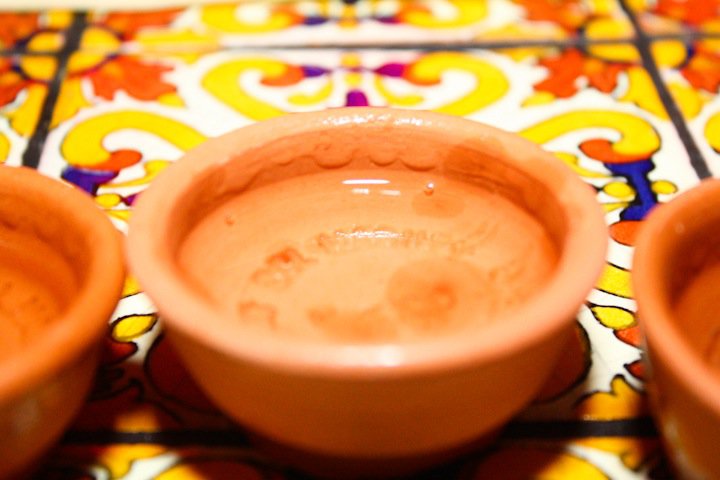
Photo: Lush Life Productions
The first cup we sipped was the Crema de Mezcal, which Cooper likes to say is “for women only…and a few strong men.” Crema de Mezcal combines Miel de Maguey (the unfermented syrup of the roasted maguey) and San Luis del Rio, one of Del Maguey’s 1995 releases. Ten percent Miel de Maguey is added to ninety percent San Luis del Rio, resulting in the lower proof (80.6) Crema de Mezcal. A roasted maguey aroma leads to a creamy sweetness on the palate, with vanilla and pear notes, and hints of orange in the long, smoky finish.
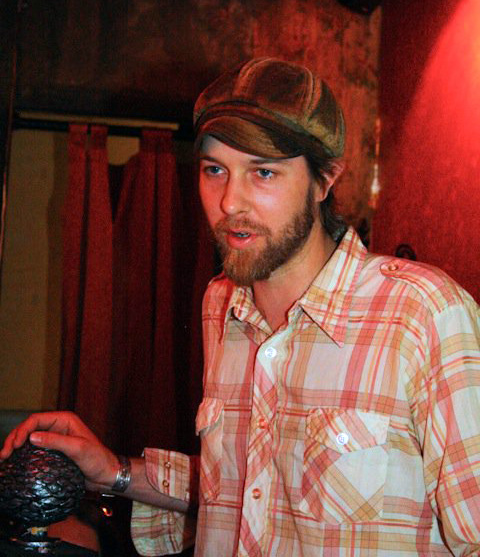
Phil Ward: “Del Maguey is the truth.”
Then Ward was introduced, and he began with a rather startling confession: “I’m a fraud.” With soft-spoken deference and self-deprecation, Ward elaborated on his declaration by crediting Cooper, Olson, and Seymour for “doing the time” and paving the way: “Mayahuel wouldn’t exist without these guys.” Regarding its creation and buildout, Ward said that Mayahuel was a “no-brainer,” thanks to Cooper. Ward noted that Mayahuel was alternately named La Verdad (“The Truth”), and he reminded us of the purity of the spirit we were tasting: “Del Maguey is the truth.”
We then tasted the second cup, a 98 proof mezcal from Santo Domingo Albarradas, a palenque located at an 8,500 foot elevation in the high Mixe region south of Oaxaca. Espiridion Morales Luis and his son Juan have distilled what Cooper called the village’s “cloud forest” surroundings in this highest of mountain mezcals. It’s an herbaceous, peaty spirit full of tropical fruit and spice. With horses and burros the only modes of available transportation, Santo Domingo Albarradas is very limited in its production.
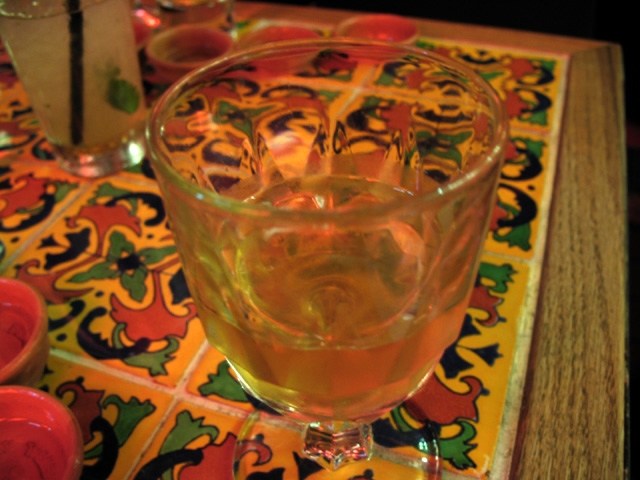
El Zachilla
Next, John Lermayer (The Florida Room) presented his El Zachilla cocktail and shared his appreciation of Cooper’s treks throughout Oaxaca to find those scattered, isolated villages. Lermayer (along with fellow mixologists and maguey aficionados) experienced some of Cooper’s journeys firsthand in a nine-day trip to Oaxaca last year. Lermayer emphasized that some of the roads the group traveled were very narrow rock roads, not dirt; his eyes widened at the memory. Stephanie also visited Oaxaca recently, though not on the same trip. I asked her about it, and her reply was simply, “Changed my life.”
EL ZACHILLA
- 1 1/4 oz. El Tesoro Reposado
- 3/4 oz. Del Maguey Mezcal Chichicapa
- 3/4 oz. Bénédictine
- 2 dashes grapefruit bitters
- Squeeze of lime juice
- Combine all ingredients in a mixing glass over ice. Stir to chill and strain into a coupe or cocktail glass.
The third cup took us to Chichicapa, separated by a mountain range from Oaxaca, two hours south and two hours to the west along a dirt road. Faustino Garcia Vasquez is the palenquero, and from Chichicapa’s 7,000 foot elevation he has channeled the surrounding desert and tropical climate into a mezcal of complex character. Chichicapa has a lighter nose and a long, smoky finish with a hint of mint.
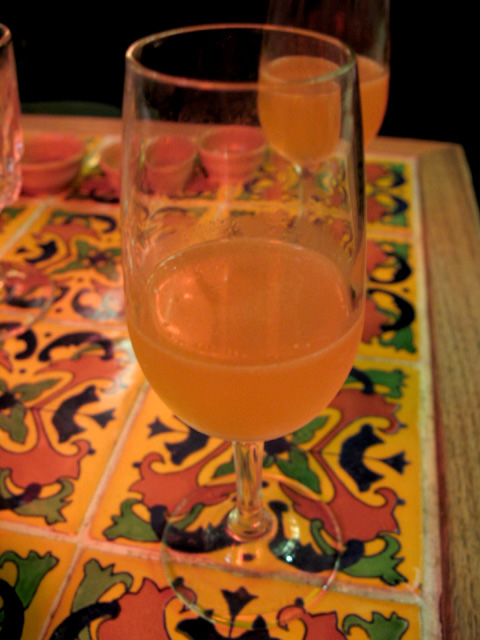
Division Bell
Ward then offered his Division Bell cocktail, a Last Word variation named after the Pink Floyd album that helped him get through Mayahuel’s five-month buildout.
DIVISION BELL
- 1 oz. Del Maguey Mezcal Chichicapa
- 3/4 oz. Aperol
- 3/4 oz. Luxardo Maraschino Liqueur
- 3/4 oz. lime juice
- Combine all ingredients in a mixing glass, fill with ice and shake. Strain into a coupe or a cocktail glass and garnish with a grapefruit peel.
Our fourth Del Maguey was Minero, made by Florencio Carlos Sarmiento and his sons Florencio Carlos Vasquez and Luis Carlos Vasquez, in the village of Santa Catarina Minas. Cooper said that Minero possesses elements of all the previous mezcals we had tasted that day. Instead of copper, the still at Santa Catarina Minas is made with clay and bamboo tubes, giving Minero distinctly sweet and fruity qualities. Minero has a high acidity and a bright, floral complexity with notes of honey and fig. The sweetness carries through the warm, smooth finish.
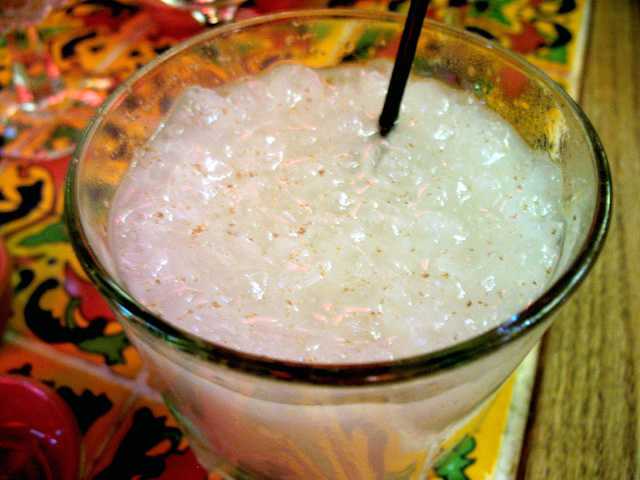
Oaxacan Milk Punch
Like Lermayer, Danny Valdez (Cure) expressed gratitude to Cooper for his experience in Oaxaca. Valdez then talked about Brandy Milk Punch, the ubiquitous New Orleans brunch drink and hangover remedy. His Oaxacan Milk Punch is a wonderful Zapotec variation of the Big Easy favorite.
OAXACAN MILK PUNCH
- 1 1/4 oz. Del Maguey Crema de Mezcal
- 1 oz. VSOP Cognac
- 2 oz. handmade horchata
- Fresh grated nutmeg
- Combine all ingredients in a mixing glass. Shake vigorously and strain over crushed ice in a rocks glass. Garnish with fresh nutmeg.
Cooper saved Tobalá, the rarest Del Maguey mezcal, for the fifth and final cup. Unique among the Del Maguey expressions, Tobalá is made from a tiny variety of maguey found only in high altitude canyons. The palenquero buries the “wild mountain maguey” for an entire month, producing an exceptionally aromatic and complex mezcal. Tobalá has sweet, tropical fruit on the nose, then mango and cinnamon on the palate, and a long, velvety finish. The annual Tobalá production (about 400 liters) is almost entirely consumed during a week-long village fiesta honoring its patron saint, but Del Maguey obtained permission for the palenquero to make an extra portion for the special bottling. The 2009 vintage of Tobalá is limited to 600 hand-numbered bottles.
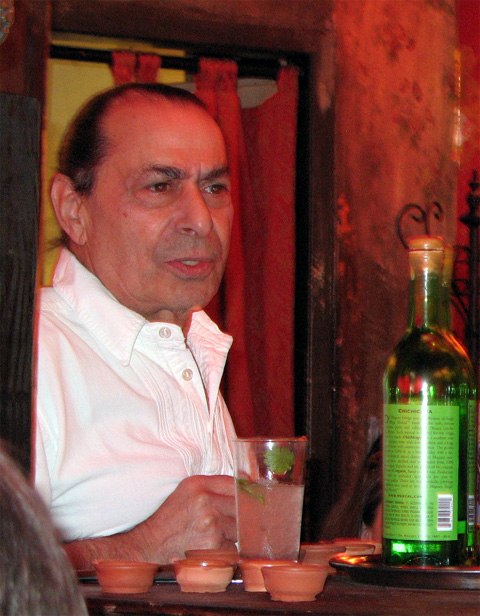
Ron Cooper, a “mystical presence”
With the tasting over, Cooper initiated an informal Q&A. Someone asked him to talk about Del Maguey’s positive impact on the indigenous culture. In addition to the palenqueros and their families, Del Maguey employs women from two villages to create Del Maguey’s signature palm fiber bottle covers; it takes an entire day to weave just one by hand. One family creates Del Maguey’s clay sipping cups, while other natives work in administration and bottling. Palenqueros and other key employees also own a percentage of Del Maguey. Cooper’s commitment to his palenqueros and their people has resulted in everything from electricity and solid floors to health care, while his non-profit organization promotes awareness of the ancient traditions and supports ongoing educational programs. Cooper doesn’t do all of this as part of a crass attempt to cash in on current trends; he does it because it’s a deeply ingrained part of his being. As Cooper puts it, “Del Maguey has been green, sustainable, and way more than fair trade for fifteen years.”
A final accolade came from David Suro-Piñera, owner of Tequila’s Restaurant in Philadelphia and Siembra Azul Tequila. He acknowledged that mezcal is “the anchor to tequila,” something he knew many of his fellow tequila producers would be loathe to admit. Suro-Piñera said that Cooper’s “mystical presence” was the reason we were all there, the beneficiaries of an artist whose desire to share an ancient, magical elixir with a few friends became something far greater than even he could have imagined.
Stigibeu!
For more information, visit Del Maguey at www.mezcal.com.
Be sure to check out Wyatt Peabody’s superb, in-depth profile of Ron Cooper at MEZCAL: Liquid Art.
NEXT: THE THREE HOUR TOUR

[…] This post was mentioned on Twitter by Thirsty in LA, 213DowntownLA. 213DowntownLA said: RT @ThirstyInLA: The Magic of Mezcal: Tasting Del Maguey with Ron Cooper at Mayahuel http://bit.ly/bXGYtM #thirstyinny #MCC […]
wonderful read- I’m newly hooked on mezcal after a recent trip to Mexico City, Del Maguey is only the best